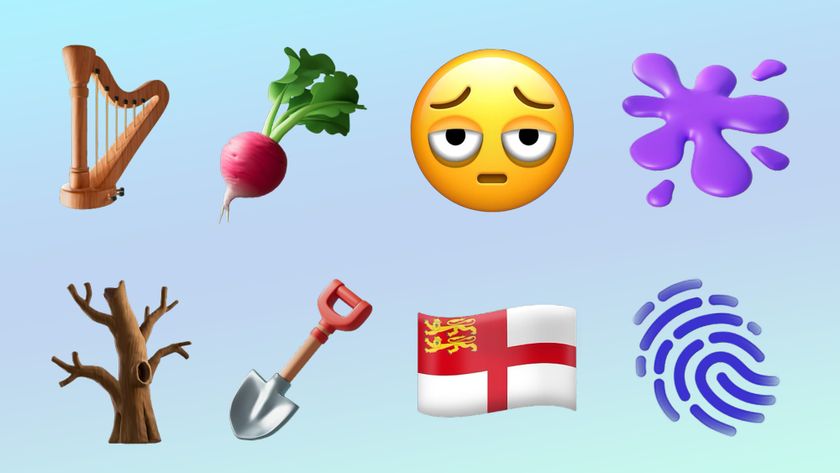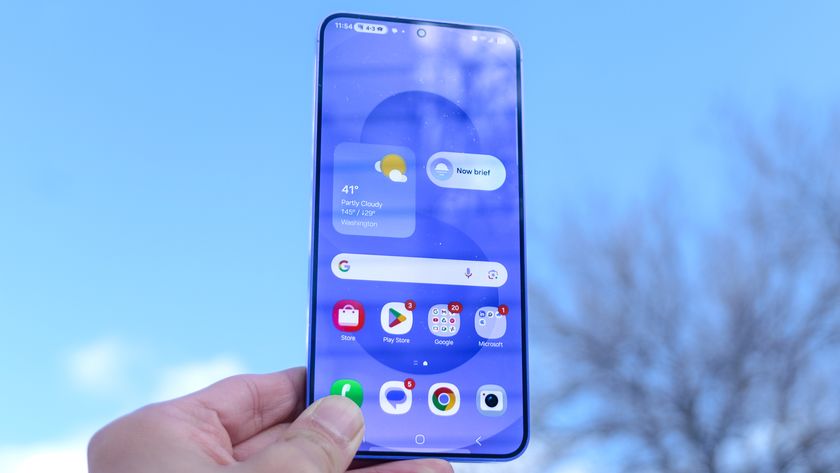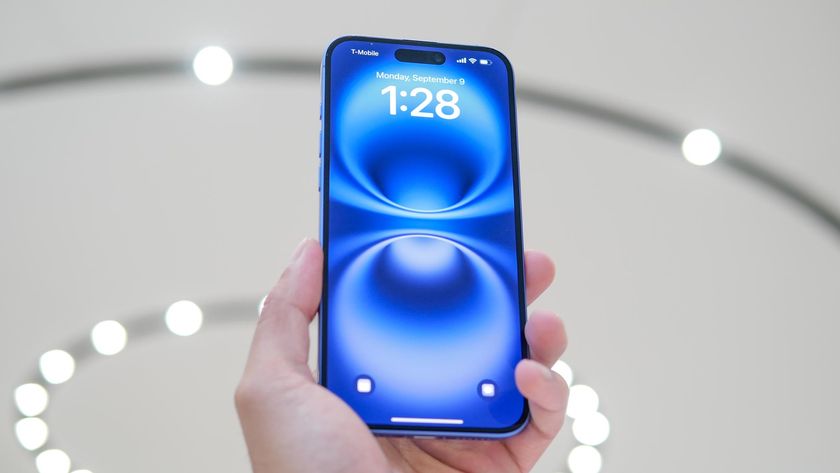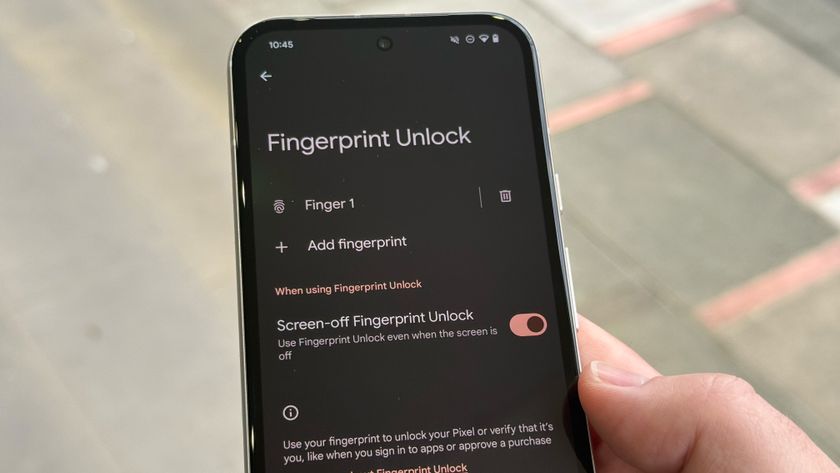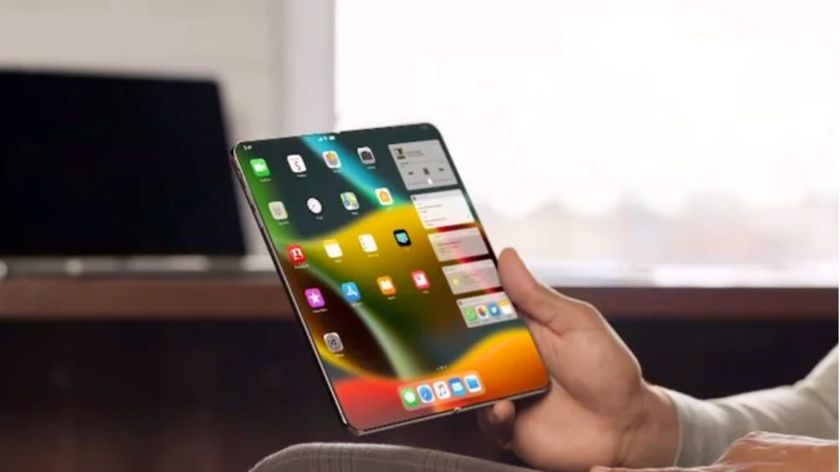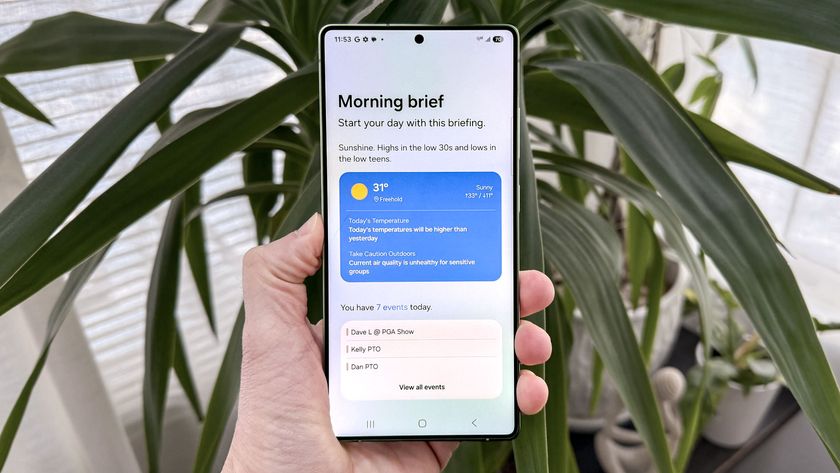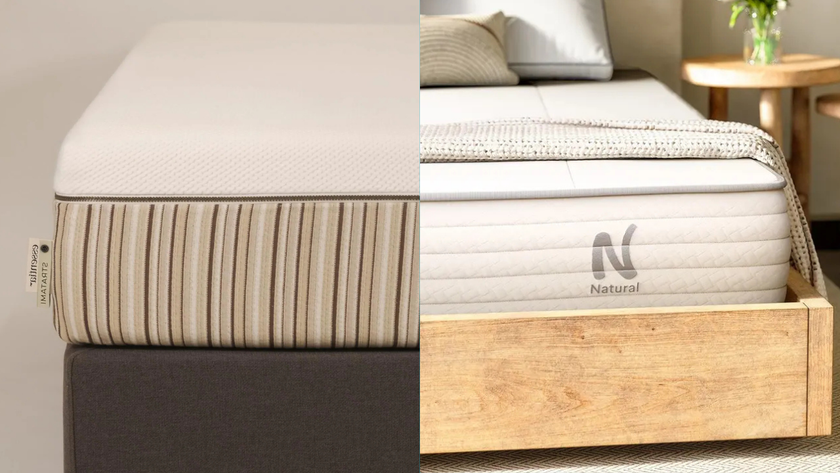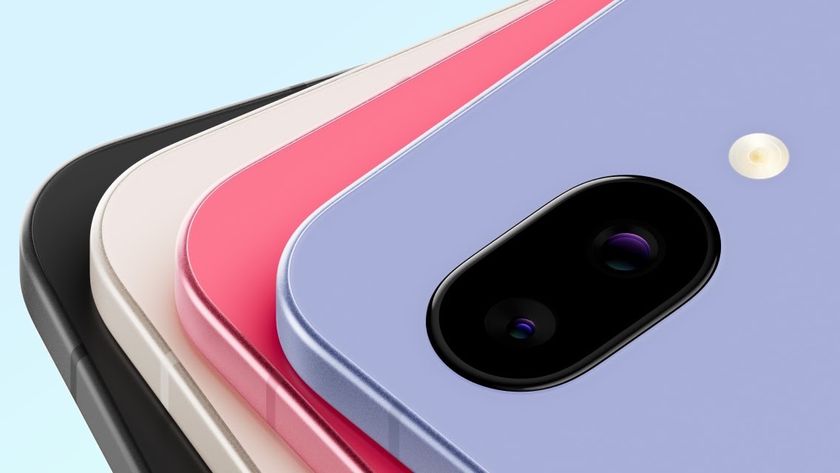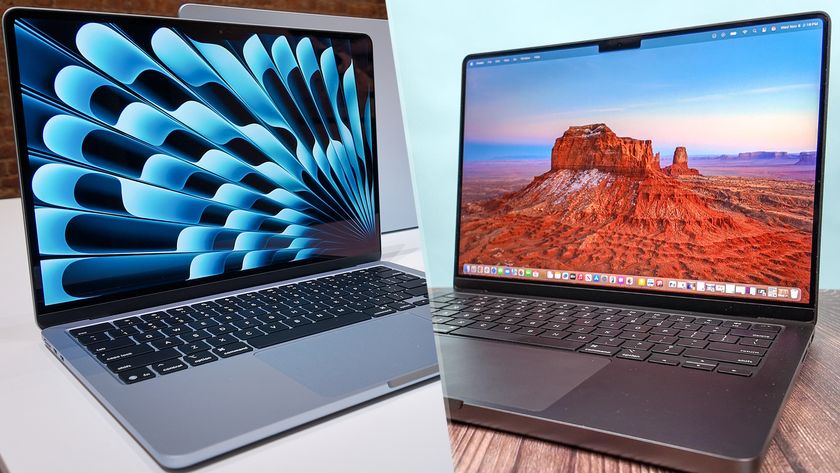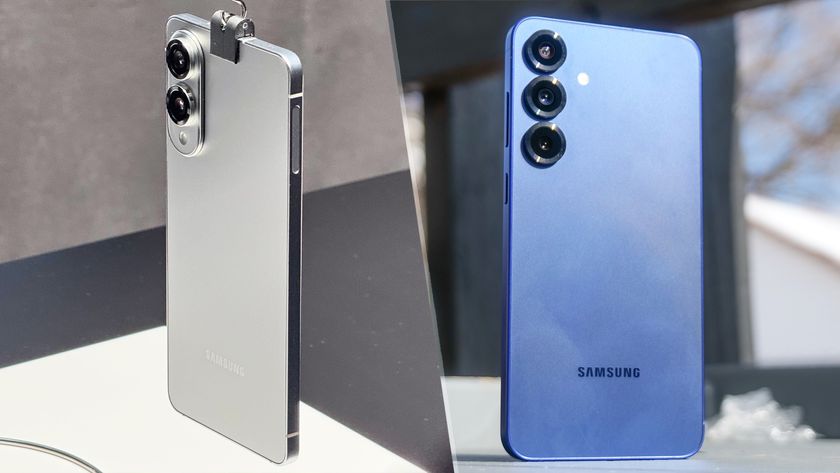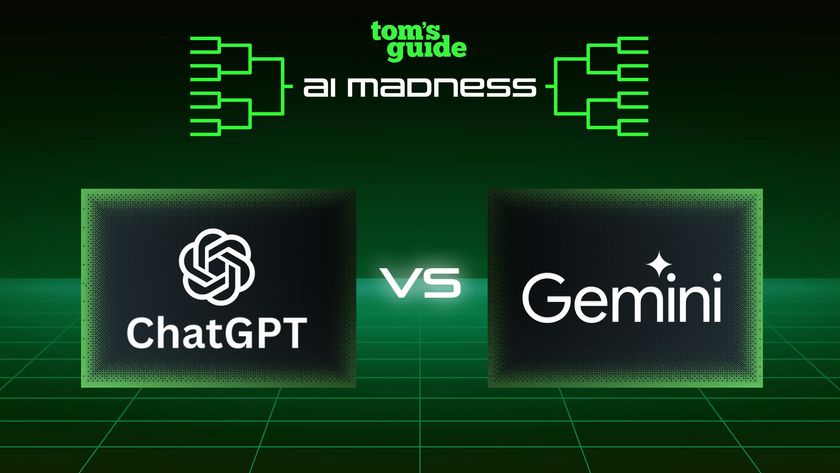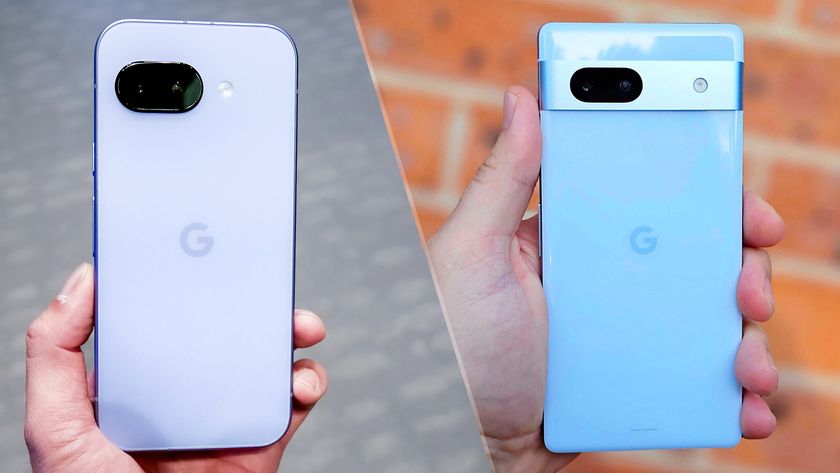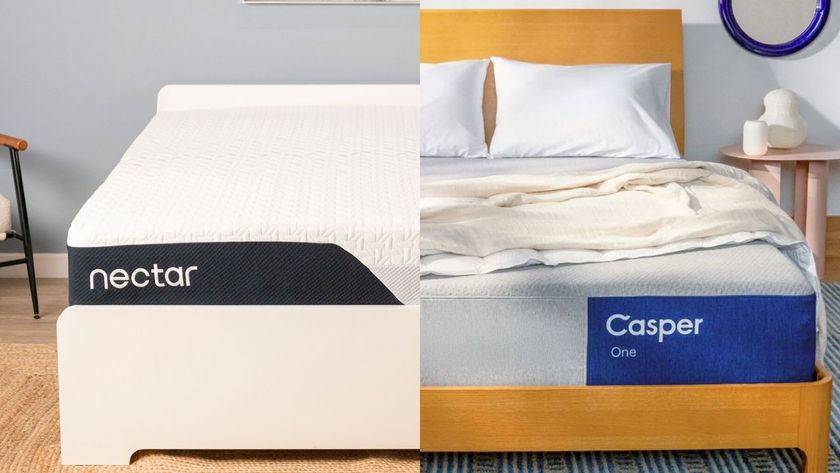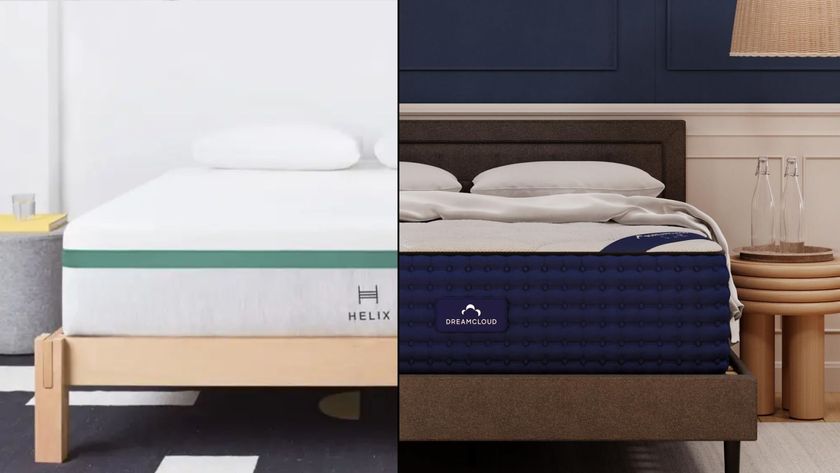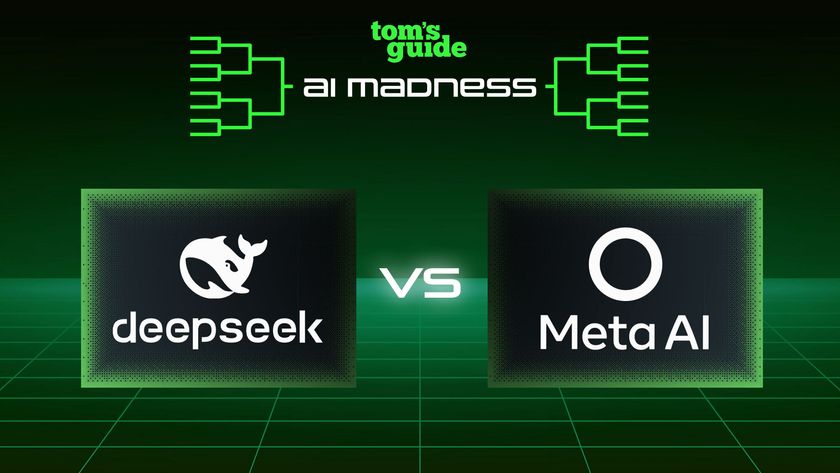Pixel 4 XL vs. iPhone 11 Pro Max: Face-off
Battle of the big-screen phones
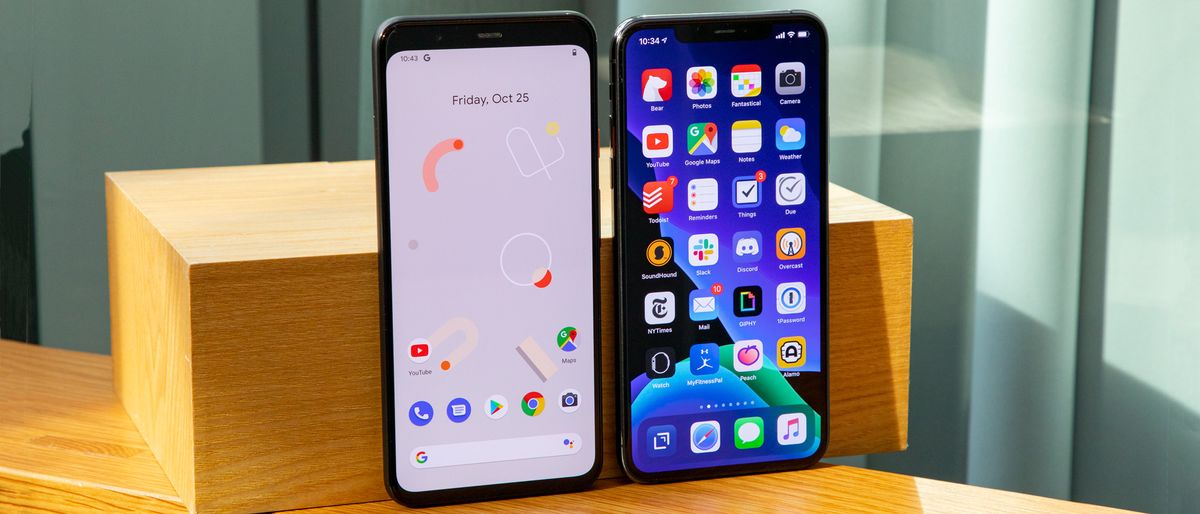
Fans of big-screen phones have a new option with the arrival of the Pixel 4 XL. Google's latest flagship offers more than just a 6.3-inch display — there's an extra camera lens on the back with improved software that promises to challenge the best camera phones available. A new Motion Sense feature gives you more ways to control your Pixel, and you also get the latest version of Android, packed with even more AI-powered tricks.
But there's a reason the iPhone 11 Pro Max has been at the top of our best phones list. Apple's big-screen smartphone has a powerful processor, an impressive camera setup of its own, and the ability to go all day on a charge. If the new Pixel is going to make a run at being the best big phone, it's going to have to go through Apple's phablet to get there.
Which of these two giants of the smartphone world should you buy? Here's how the phones stack up in our Pixel 4 XL versus iPhone 11 Pro Max face-off.
Pixel 4 XL vs. iPhone 11 Pro Max: Specs
| Phone | Pixel 4 XL | iPhone 11 Pro Max |
| Starting Price | $899 | $1,099 |
| Display (Resolution) | 6.3-inch AMOLED Smooth Display (3040 x 1440) | 6.5-inch Super Retina XDR Display (2688 x 1242) |
| CPU | Snapdragon 855 | A13 Bionic |
| RAM | 6GB | 4GB (unconfirmed) |
| Storage | 64GB, 128GB | 64GB, 256GB, 512GB |
| microSD? | No | No |
| Rear Cameras | 12.2-MP main (f/1.7); 16-MP telephoto (f/2.4) | 12-MP wide (f/1.8), 12-MP ultra wide (f/2.4), 12-MP telephoto (f/2.0) |
| Front Camera | 8-MP (f/2.0) | 12-MP (f/2.2) |
| Battery Size | 3,700 mAh | 3,966 mAh (unconfirmed) |
| Battery Life (Hrs:Mins) | 9:42 | 11:54 |
| Water Resistance Rating | IP68, up to 1.5 meters for 30 minutes | IP 68, up to 4 meters for 30 minutes |
| Size | 6.3 x 2.9 x 0.3 inches | 6.22 x 3.06 x 0.32 inches |
| Weight | 6.8 ounces | 7.97 ounces |
| Colors | Just Black, Clearly White, Oh So Orange | Gold, Space Gray, Midnight Green, Silver |
Pixel 4 XL vs. iPhone 11 Pro Max: Design
If you were to take away the Google and Apple logos, you'd be hard-pressed to identify the Pixel 4 XL or the iPhone 11 Pro Max from the rear. Both phones feature prominent camera arrays protruding from the back. (The Pixel has two lenses, while the iPhone has three — so that's one way to tell them apart.) The phones are similarly sized, too, with the Pixel 4 XL fractionally taller and the iPhone 11 Pro Max a bit wider. Apple's phone weighs more, though, at nearly 8 ounces to the Pixel's 6.8 ounces, and the extra heft is noticeable.
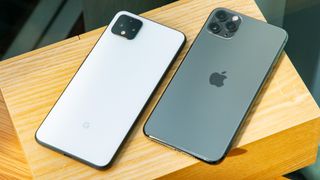
Apple has gone to a matte glass finish on the back of the iPhone 11 Pro Max, and besides the aesthetic appeal, there's a practical benefit to that approach: The iPhone doesn't pick up fingerprints quite as easily as the Clearly Black version of the Pixel 4 XL does on its glossy, mirrored finish. At least the Clearly White and Oh So Orange Pixel options feature matte surfaces on their backs.
Those three colors — black, white and orange — are your options for the Pixel 4 XL. The iPhone 11 Pro Max counters with gold, space gray, silver and the grayish Midnight Green. If you're looking for daring colors, look beyond these two phones, where the Creamsicle look of the Pixel 4 XL's Oh So Orange is about as bold as it gets.
Both phones boast IP68 water resistance, though Apple opts for a more stringent version of that standard. While Google says the Pixel 4 XL can survive a 30-minute dip in up to 1.5 meters (5 feet) of water, the iPhone 11 Pro Max more than doubles that depth to 4 meters (13 feet).
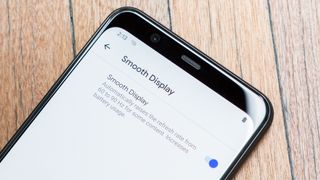
Bezel or notch? Those are the choices you face when trying to decide between the Pixel 4 XL and the iPhone 11 Pro Max. Google got rid of the notch on the front of the Pixel 3 XL in favor of a more prominent forehead at the top of the display; this area accommodates both the front camera and all the sensors that enable the phone's new face unlocking and Motion Sense features. The iPhone 11 Pro Max retains the look introduced in 2017, where a notch houses the front camera and components supporting Apple's Face ID unlocking feature.
Winner: iPhone 11 Pro Max
Pixel 4 XL vs. iPhone 11 Pro Max: Display
There's a key difference between the two AMOLED screens on these phones: The Pixel 4 XL boasts a 90-Hz refresh rate, compared with the iPhone 11 Pro Max's more standard 60-Hz rate. That means you get a smoother experience while scrolling through web pages and playing games on Google's phone. Even better, Google made the refresh rate dynamic, so when you're not actively using the phone, it slows the refresh rate to conserve power. (Google may have gone a little too far on this feature, in that it shuts off the faster refresh rate if you drop your screen below 75% brightness; an upcoming software update will give you more control over when the refresh rate is active on the Pixel 4 XL.)
That faster refresh rate comes in handy when you're browsing the web, but I didn't notice a difference when watching the trailer for the upcoming Star Wars installment on both phones. In fact, I'd say the picture looked every bit as sharp on the iPhone's 6.5-inch display as it did on the Pixel 4 XL's 6.3-inch panel, even though the Pixel claims a sharper resolution (3040 x 1440, compared with the iPhone's 2688 x 1242).
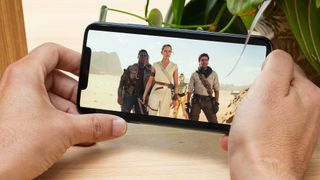
The Pixel 4 XL's display is more colorful, capturing 131.7% of the sRGB color gamut versus the iPhone 11 Pro Max's 118.6%. Those colors are more accurate, too, as the Pixel's Delta-E rating of 0.26 edges out the iPhone 11 Pro Max's 0.28. (The closer the number is to zero, the more accurate the colors are.)
Our lab testing confirmed my biggest beef with the Pixel 4 XL: The screen is very dim. Using a light meter, we got a reading of 418 nits, which means this Google phone is dimmer than most top smartphones available right now. The iPhone 11 Pro Max's 761 nits of brightness positively crushes the Pixel's showing. I had to crank up the Pixel 4 XL's display to maximum brightness whenever I went outside — something I didn't have to do with the iPhone 11 Pro Max.
Winner: iPhone 11 Pro Max
Pixel 4 XL vs. iPhone 11 Pro Max: Cameras
We've already pitted the Pixel 4 against the iPhone 11 Pro in a camera face-off, and the results are similar for their larger counterparts from Google and Apple. That's because the camera hardware and software are unchanged between the Pixel 4 and 4 XL as well as the iPhone 11 Pro and 11 Pro Max.
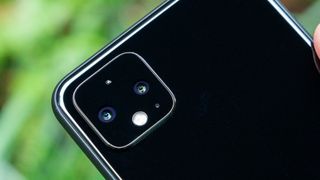
In the Pixel's case, that means you get a 12.2-megapixel main rear camera joined by a 16-MP telephoto lens, giving the Pixel 4 XL a 2x optical zoom that you can augment with Google's Super Res Zoom feature. Google improved the camera software for the Pixel 4 lineup, too, adding dual exposure controls to tweak brightness and shadows, incorporating AI into white balance for improved colors, and boosting the impressive Night Sight feature to take clear pictures of the night sky.
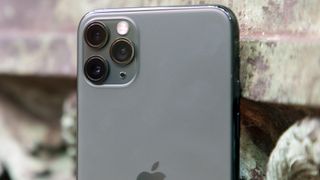
Apple didn't skimp on camera improvements with the iPhone 11 Pro Max, either, adding a third lens to the back of the phone. That means you get 12-MP ultrawide and telephoto lenses joining the 12-MP main shooter. The new iPhones have software improvements of their own, including a Night Mode to challenge the Pixel's Night Sight, and Deep Fusion, which uses pixel-by-pixel processing to pull out more details and textures in a photo with less noise. (We found that Deep Fusion delivers what Apple promises, but you really have to look to see the benefits.)
So how does that translate to the pictures both phones produce? When we photographed this statue on the campus of the University of California, we saw the Pixel 4 XL's skilled handling of shadows. You can make out some details of the statue in the Pixel 4 XL's shot, whereas it remains pretty dark in the iPhone 11 Pro Max's effort. Details outside the shadows, like the building in the background and the sky and tree to the right of the statue, are a little overexposed in the iPhone 11 Pro Max's shot, whereas the Pixel handles them with ease.
Moving across the country to New York's Grand Central Station, the iPhone 11 Pro Max gives us a much more true-to-life shot in difficult lighting conditions. The photo looks well-balanced, and details, like the clock in the middle of the picture, pop. The light streaming in from the rear windows doesn't overwhelm the iPhone. The Pixel 4 XL's photo exhibits many of those qualities, but gives everything an overly yellowish cast that oversaturates the image.
Speaking of that clock, we zoomed in beyond the 2x optical zoom that both phones support for an 8x close-up. The power of combining an optical zoom with Google's Super Res Zoom feature is really on display here. The Pixel 4 XL uses AI-powered software to sharpen the details on our zoomed-in photo, so that the numbers on the clock remain in focus and there's no noise or distortion in the finished shot. The iPhone's effort isn't bad, but the reliance on a digital zoom lets in a little too much light from those windows. At least the people in the background of the iPhone's photo look relatively sharp.
Google says it's improved Portrait Mode on its new Pixels, so that the cameras can better handle things like hair. And the Pixel 4 XL does do a good job of separating my daughter from the background, even if a loose strand of hair on the right side of her face gets caught in the blur. But I think the iPhone 11 Pro Max does a better job with color; my daughter's eyes look brighter in that shot, and the Pixel darkens things a little too much for my taste. I also think there's oversmoothing going on with her skin on the Pixel, as you really can't make out any of her freckles.
Google has ruled low-light photography since last year's Pixel 3 introduced Night Sight. But Apple responded by adding a Night Mode to the iPhone 11 lineup, and you could make the case that the student has become the master. There's not much separating this shot of lamps in my backyard — something we wouldn't have been able to say had we used an iPhone XS Max instead. The photos from both the Pixel 4 XL and the iPhone 11 Pro Max are balanced, contain plenty of details and don't overcompensate for the lack of light. The Pixel's photo is probably a shade better because it captures more background details, but the iPhone is now in the conversation for best low-light photography, which wasn't true a few months ago.
Google pulled back on the number of front cameras with the Pixel 4 XL, opting for a single 8-MP shooter instead of two selfie cams. The trade-off is that you no longer can switch between wide-angle and closer self-portraits (it's just a wide view now), but the real problem is that the Pixel 4 XL doesn't handle skin tones or colors very well. My face is too ruddy and smoothed in the Pixel 4 XL's shot, and my hat looks pretty muted. The iPhone 11 Pro Max features a more pleasing shade of gold, and the field in the background looks greener and lusher. More important, that's a more true-to-life view of my face, wrinkles and all, which is what I prefer from my selfies.
We've focused on still cameras because it's a pretty fair fight between the Pixel 4 XL and the iPhone 11 Pro Max. But Apple put a special emphasis on video with its new phones, adding extended dynamic range to better highlight details; cinematic stabilization means the footage you shoot should look smoother than before. And, of course, you can take slow-motion selfies with the iPhone 11 Pro Max's front camera. Google, meanwhile, has kept pretty quiet about the Pixel 4 XL's video features, other than to defend its decision not to support 4K video at 60 fps — something the iPhone 11 Pro Max can shoot with both its front and rear cameras.
Winner: iPhone 11 Pro Max
Pixel 4 XL vs. iPhone 11 Pro Max: Face unlock
Ever since the iPhone X came out two years ago, you've been able to unlock Apple's flagship phones with your face, thanks to the well-designed and very secure Face ID feature. Now, the Pixel 4 and 4 XL are following suit, dropping the rear fingerprint reader found on previous Pixels. And you know what? Google actually did a very good job of implementing this feature on the Pixel 4 XL.
While I think Face ID is easier to set up — the on-screen instructions are a bit clearer, and the process seems snappier — once everything is up and running, Google's face unlock feature is faster than Apple's, at least when I pick up both sleeping phones. I can also unlock the Pixel 4 XL when it's in landscape mode, which I can't do with the iPhone 11 Pro Max. Google will need to make a few tweaks for security — the Pixel's face unlock works even if your eyes are closed, so Google is working on a Face Unlock update to close that loophole.
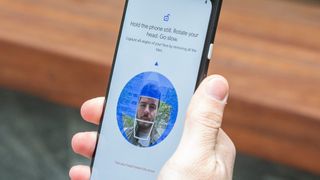
The same sensors that help make the Pixel 4 XL's unlock feature work so quickly also enable the phone's new Motion Sense capabilities. Motion Sense uses radar technology to let you control your phone using gestures, without you ever having to touch the screen. The feature is pretty limited now — you can use Motion Sense to control music playback and dismiss alarms — but it's something the Pixel 4 XL can do that the iPhone 11 Pro Max cannot.
Winner: Pixel 4 XL
Pixel 4 XL vs. iPhone 11 Pro Max: Performance
Wake us when you can find an Android phone that outperforms the iPhone. Apple's latest phones run on the A13 Bionic chipset, the fastest mobile processor we've tested. For the Pixel 4 XL, Google has turned to the Snapdragon 855, a high-performing chipset that powers many of the top Android phones that have come out in 2019. But the Snapdragon 855 still lags behind last year's A12 Bionic chip, and it definitely doesn't match the A13 inside the iPhone 11 Pro Max. The Pixel 4 XL doesn't do anything to reverse that trend.
Google's phone recorded a multicore score of 2,582 on Geekbench 5, which measures general performance. That's in line with other top Android flagships — some score higher, and some finish a little lower — but it's nowhere near the iPhone 11 Pro Max's score of 3,517.
When it comes to graphics, the Pixel 4 XL fared better, actually beating the iPhone on 3DMark's Sling Shot Extreme Unlimited test (6,462 versus 5,974). On that test, the iPhone 11 Pro Max has lagged other Android flagships, such as the Samsung Galaxy Note 10 and the OnePlus 7 Pro. But when we turned to GFXBench, the iPhone topped the Pixel 4 XL once more, recording a score of 1,657 frames (25 fps) on the Aztec Ruins high-tier off-screen test, compared with the Pixel's 1,061 (16 fps).
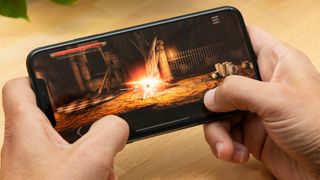
As for real-world tests, we had both phones convert a 4K video to 1080p in the Adobe Premiere Rush app after applying an effect and a transition. The iPhone 11 Pro Max handled that task in 45 seconds, while it took the Pixel 4 XL 1 minute and 31 seconds.
Google packs more RAM into its phone, offering 6GB. Apple never officially reveals how much memory comes with its phones, but teardowns of the iPhone 11 Pro Max have pegged the number at 4GB. Google could have gotten an edge on Apple by offering more storage in its base model, but both phones feature a relatively paltry 64GB. You can pay an extra $100 to get a 128GB Pixel 4 XL, but Apple offers 256GB and 512GB options for an extra $150 and $350, respectively.
Winner: iPhone 11 Pro Max
Pixel 4 XL vs. iPhone 11 Pro Max: Battery life
It's a tale of two batteries when you compare the Pixel 4 XL with the iPhone 11 Pro Max. At 3,700 mAh, the Pixel 4 XL's battery is smaller than the 3,969-mAh power pack inside the iPhone 11 Pro Max. (Again, that information comes from teardowns, as Apple doesn't list battery sizes for its phones.) And, not coincidentally, the iPhone 11 Pro Max lasts much longer on a charge.
In our battery test, where we have phones surf T-Mobile's LTE network continuously until they run out of power, the iPhone 11 Pro Max held out for 11 hours and 54 minutes, placing it on our best phone battery life list. (It's also the longest-lasting iPhone we've ever tested.) The Pixel 4 XL didn't fare as well, running out of juice more than 2 hours earlier than the iPhone, with a runtime of 9 hours and 42 minutes. That's below average for a smartphone.
At least the Pixel 4 XL charges quickly, thanks to support for 18-watt fast charging. We got up to a 43% charge after 30 minutes of charging a completely drained Pixel 4 XL, though the iPhone 11 Pro Max got up to 48% with the help of an 18-watt charger. That charger now comes with the iPhone 11 Pro Max, reversing Apple's policy of forcing iPhone owners to buy a separate accessory if they wanted fast charging for their high-end iPhones.
Both the Pixel 4 XL and the iPhone 11 Pro Max support wireless charging, and Google has expanded fast wireless charging support beyond its own Pixel Stand accessory (though you'll need a Qi-compatible charger that supports the Extended Power Profile standard).
Winner: iPhone 11 Pro Max
Pixel 4 XL vs. iPhone 11 Pro Max: Software
Apple's phones boast at least one capability that make even the fiercest Android advocates green with envy: Any time Apple issues a software update, it's immediately available to the iPhone. But the Pixel is one of the few Android devices to have immediate access to any updates that Google issues for its own OS, so that iPhone edge is blunted.
Both the Pixel 4 XL and the iPhone 11 Pro Max ship with the latest versions of their makers' operating systems — Android 10 for the Pixel and iOS 13 for the iPhone. While iOS 13 has had the sorts of bugs that usually accompany new OS versions, Apple's been pretty good about stomping them out with software updates. And iOS has introduced several new improvements, like a redesigned Photos app, a clever "Sign in with Apple" feature and a system-wide Dark Mode. Android 10 also delivers a Dark Theme feature, though it's haphazardly implemented, making Android 10 feel like a work in progress.

Pixel 4 and 4 XL owners have access to one Android 10 feature that's not yet available on other phones, not even older Pixels. That's Live Caption, which automatically adds closed-captioning to any video you watch. It's been pretty accurate in my testing, and all that transcription happens directly on your device. The same is true of the real-time transcription in Google's new Record app on the Pixel 4 XL. The Google Assistant has gotten smarter and easier to use, whereas Siri's improvements are incremental at best. And it's features like these that really show off Google's superiority in infusing its smartphones with added smarts.
Winner: Pixel 4 XL
Pixel 4 XL vs. iPhone 11 Pro Max: Price and availability
When people talk about how expensive flagship phones have gotten in recent years, they're thinking of the iPhone. And while Apple has lowered the price on some of its phones — the iPhone 11 now starts at $699, and you can find an even cheaper iPhone if you buy an older model — the iPhone 11 Pro Max isn't one of them. It will cost you $1,099, and that's if you don't want to bump up the storage from the 64GB in the base model.
The Pixel 4 XL, while not a cheap phone, is a comparative bargain next to the iPhone 11 Pro Max. You can buy the base model for $899, and if you max out the storage to 128GB, you'll still pay $100 less than you would for the 64GB iPhone 11 Pro Max.
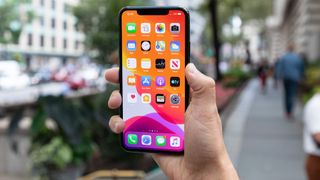
The iPhone used to enjoy wider availability than Google's Pixel phones, which you could buy only from Google or Verizon. But the Pixel 4 XL erases that edge, as Google's latest flagships are available from every major carrier as well as a few off-the-beaten-path options, like Xfinity Mobile, Spectrum Mobile and Visible. What's more, the Pixel 4 XL is optimized for Google's own Google Fi wireless service, which touts competitive rates for LTE data and the ability to use your data when you travel overseas. (iPhones work on Google Fi, too, but they can't switch seamlessly between the different cellular networks Google uses as the Pixel can.)
Winner: Pixel 4 XL
Overall Winner: iPhone 11 Pro Max
Google's Pixel 4 XL puts up a spirited fight against Apple's iPhone 11 Pro Max, thanks in large part to the way Google exploits its advantages in machine learning to offer everything from smarter apps to a dynamic refresh rate for its display. But as appealing as Google's new phone may be, particularly to Android fans, in the end, the iPhone 11 Pro Max is the better handset.
| Row 0 - Cell 0 | Pixel 4 XL | iPhone 11 Pro Max |
| Design (10 points) | 7 | 8 |
| Display (15 points) | 13 | 12 |
| Cameras (20 points) | 17 | 18 |
| Face Unlock (5 points) | 4 | 3 |
| Performance (15 points) | 12 | 15 |
| Battery Life (20 points) | 15 | 19 |
| Software (5 points) | 5 | 4 |
| Price & Availability (10 points) | 8 | 6 |
| Overall (100 points) | 81 | 85 |
Credit the superior performance of the A13 Bionic processor, the iPhone's vastly better battery life, a brighter display and the fact that Apple has caught up to Google when it comes to mobile photography. Even in areas where the iPhone 11 Pro Max trails the Pixel 4 XL, such as Face Unlock and software, the gap is not big enough to negate the iPhone's clear advantages. Google Assistance is certainly smarter and faster than Siri, however.
The Pixel 4 XL is a good phone to get if you're a committed Android user, and you'll pay up to $200 less if you go for Google's phone instead of Apple's four-figure handset. But if you want the best big-screen phone available right now, the iPhone 11 Pro Max wins.
Sign up to get the BEST of Tom's Guide direct to your inbox.
Get instant access to breaking news, the hottest reviews, great deals and helpful tips.
Philip Michaels is a Managing Editor at Tom's Guide. He's been covering personal technology since 1999 and was in the building when Steve Jobs showed off the iPhone for the first time. He's been evaluating smartphones since that first iPhone debuted in 2007, and he's been following phone carriers and smartphone plans since 2015. He has strong opinions about Apple, the Oakland Athletics, old movies and proper butchery techniques. Follow him at @PhilipMichaels.
